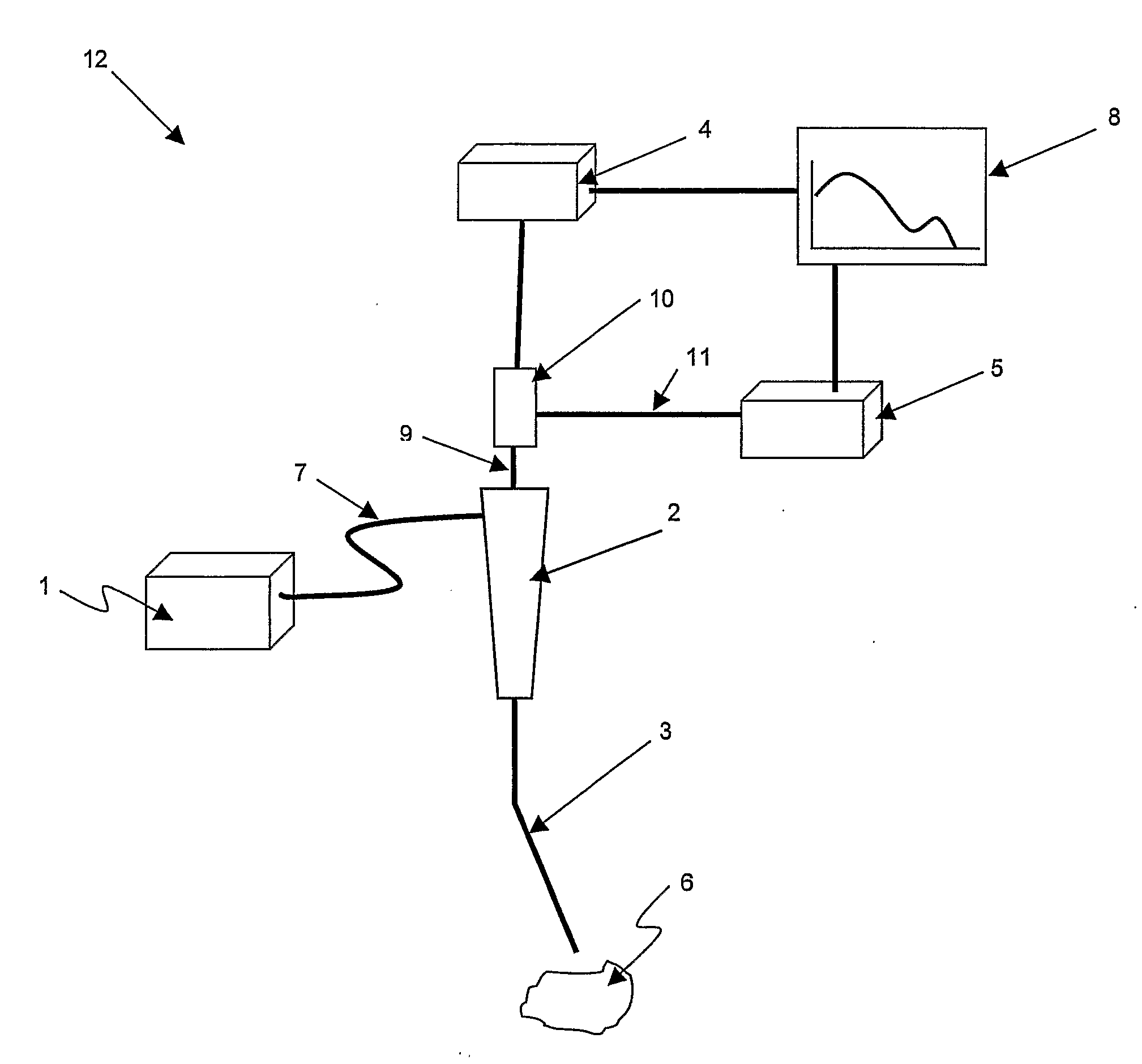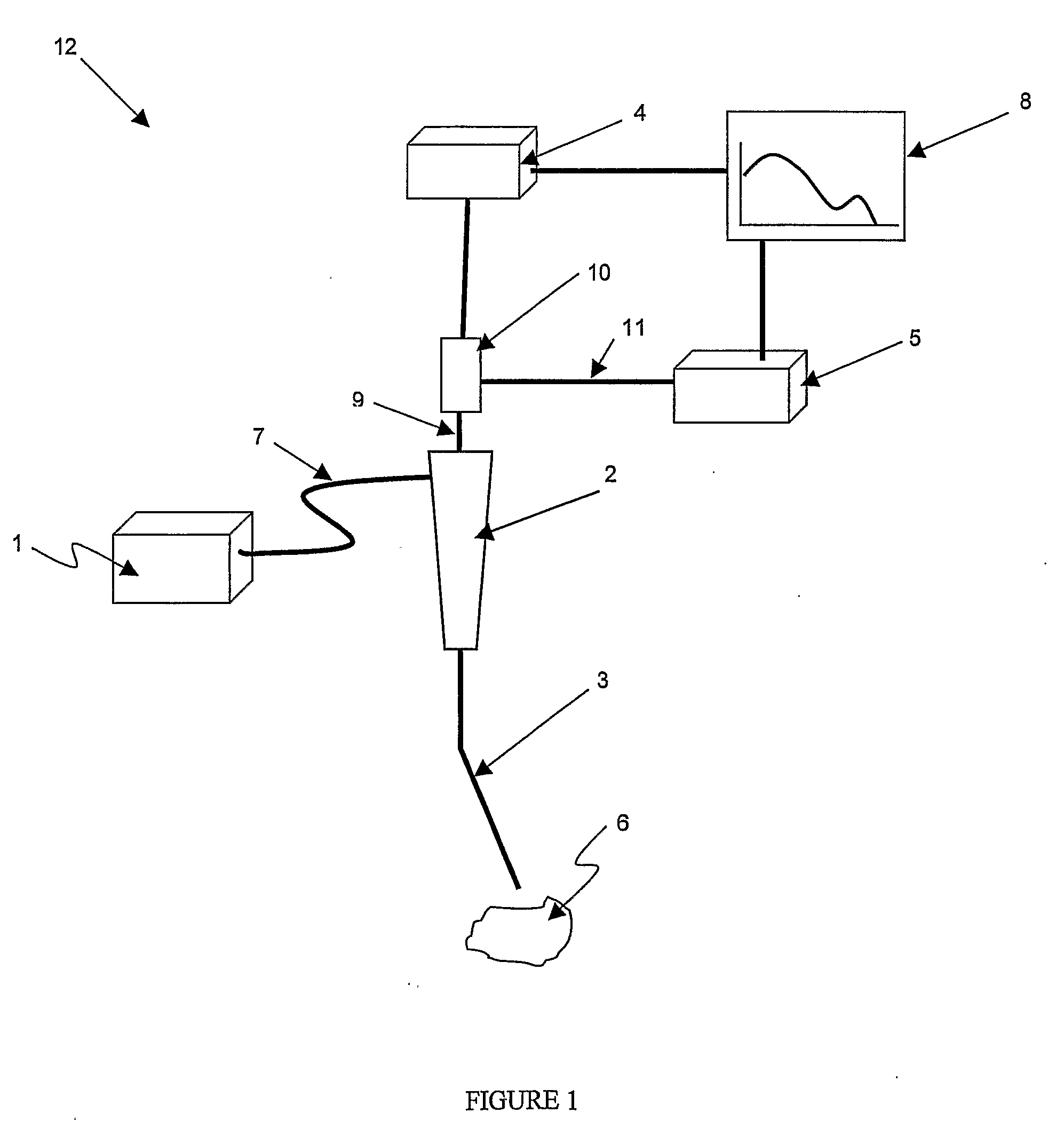Method and apparatus for measuring cancerous changes from reflectance spectral measurements obtained during endoscopic imaging
a technology of reflectance spectral and imaging, applied in the field of optical spectroscopy, can solve the problems of increasing the cost of detection specificity, increasing the detection sensitivity, and unable to detect about 25 percent of lung cancer,
- Summary
- Abstract
- Description
- Claims
- Application Information
AI Technical Summary
Problems solved by technology
Method used
Image
Examples
Embodiment Construction
[0041]While the invention may be susceptible to embodiments in different forms, there is shown in the drawings, and herein will be described in detail, specific embodiments with the understanding that the present disclosure is to be considered an exemplification of the principles of the invention, and is not intended to limit the invention to that as illustrated and described herein.
[0042]The approach of the present invention is to obtain quantitative information about the absorption-related and / or scattering-related properties from the diffuse reflectance spectra (DRS) obtained during in vivo endoscopic imaging. Diffuse reflectance relies upon the projection of a broadband light beam into the sample where the light is absorbed, reflected, scattered, and transmitted or back-reflected through the sample material. The back-reflected (back-scattered) light is then collected by the accessory (e.g. an optical fiber) and directed to the detector optics. Only the part of the beam that is s...
PUM
 Login to View More
Login to View More Abstract
Description
Claims
Application Information
 Login to View More
Login to View More - R&D
- Intellectual Property
- Life Sciences
- Materials
- Tech Scout
- Unparalleled Data Quality
- Higher Quality Content
- 60% Fewer Hallucinations
Browse by: Latest US Patents, China's latest patents, Technical Efficacy Thesaurus, Application Domain, Technology Topic, Popular Technical Reports.
© 2025 PatSnap. All rights reserved.Legal|Privacy policy|Modern Slavery Act Transparency Statement|Sitemap|About US| Contact US: help@patsnap.com



